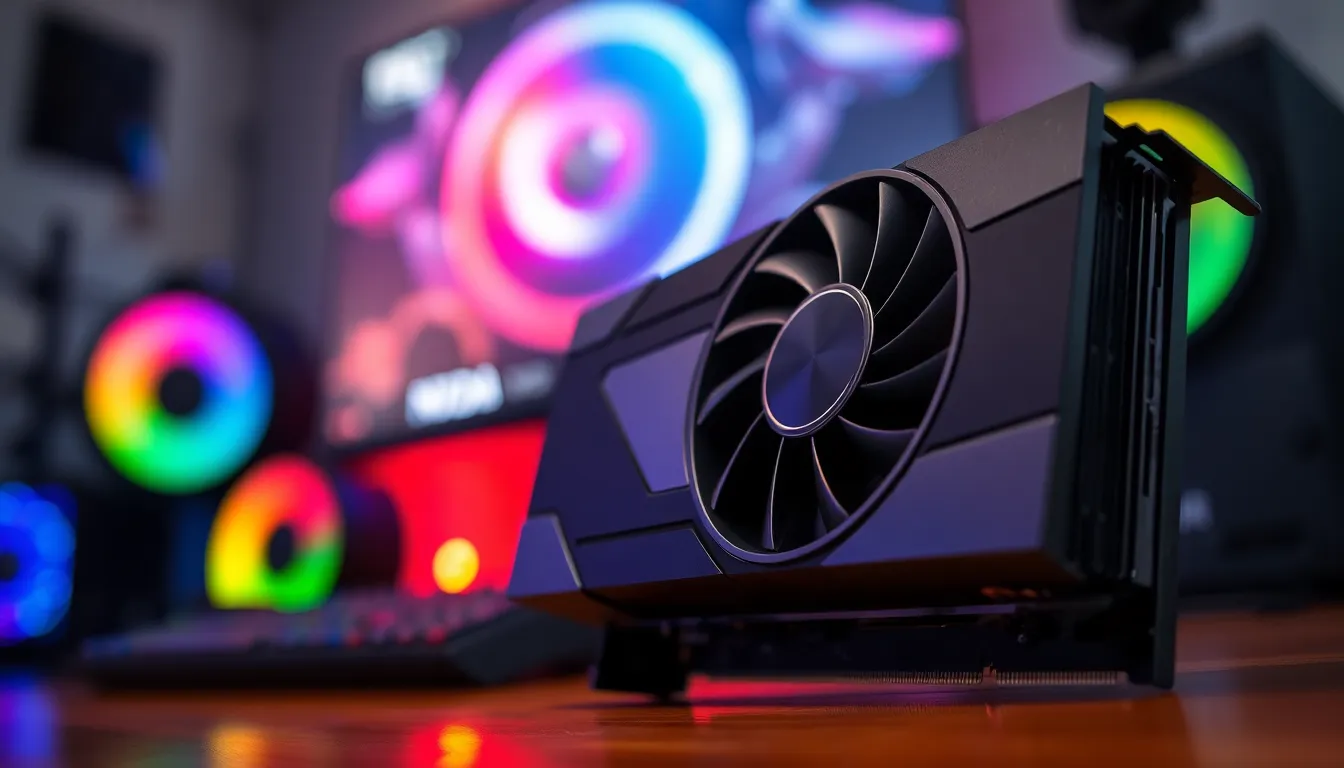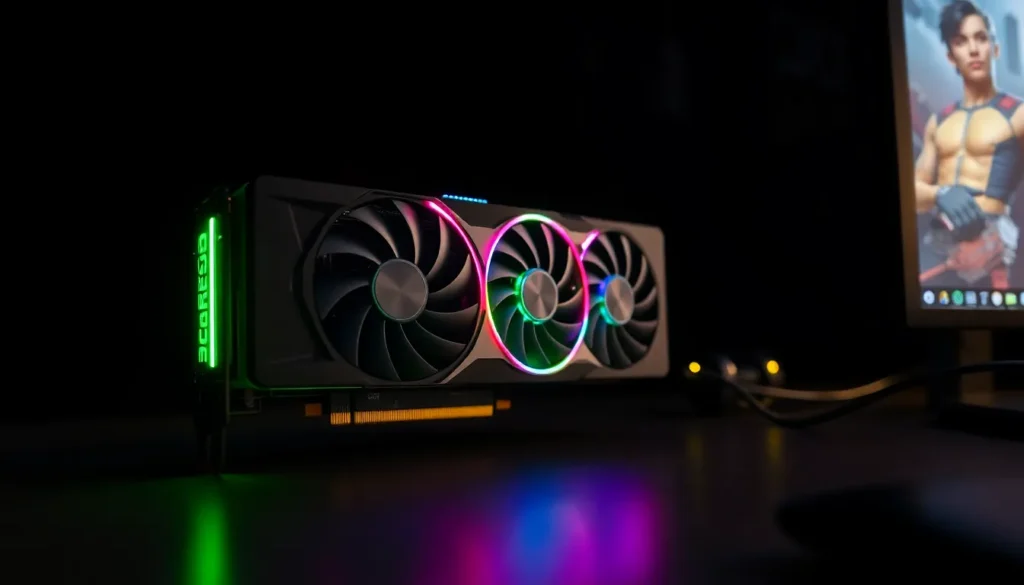Table of Contents
ToggleWhen it comes to GPUs, the term “Ti” often pops up, leaving many scratching their heads. Is it a secret code for elite gamers? A mystical incantation for better frame rates? Not quite, but it does hold some serious significance in the world of graphics cards.
Understanding GPU Terminology
The term “Ti” signifies a more powerful version of a typical model. This designation appears in NVIDIA’s graphics cards, indicating enhancements in performance and features. Numerous users associate “Ti” models with superior specifications, reflecting higher core counts and increased memory bandwidth.
These variations often exhibit better performance in gaming and rendering tasks. Graphics cards labeled “Ti” generally consume more power but deliver more efficiency, appealing to gamers and professionals seeking advanced capabilities.
When comparing models, the presence of “Ti” suggests an upgrade in processing capability. For instance, the NVIDIA GeForce RTX 3060 typically holds slightly lower specifications compared to the RTX 3060 Ti. It’s crucial to evaluate benchmarks and reviews to observe performance differences.
Gamers benefit from the enhanced frame rates and smoother gameplay provided by “Ti” variants. Additionally, creative professionals utilize these cards for rendering and video editing, noticing a significant boost in workflow efficiency.
Understanding these nuances helps consumers make informed choices in their GPU selection. Model numbers and designations serve as quick indicators of performance expectations. Knowing the implications of “Ti” allows users to align their GPU choice with specific performance needs.
The Significance of “Ti” in GPU Models

The term “Ti” plays a crucial role in identifying enhanced NVIDIA GPU models. This designation indicates improvements in power, efficiency, and overall performance.
Historical Context
In the early 2000s, NVIDIA introduced the “Ti” suffix with the GeForce 2 Titanium series. This addition aimed to signify a more capable version of existing models. With each new generation, “Ti” became synonymous with increased core counts and superior processing capabilities. Over the years, it evolved to encompass GPUs designed for both gaming and professional use. The presence of “Ti” in model names highlights NVIDIA’s commitment to delivering greater performance levels to users. This historical lineage has led consumers to expect robust enhancements with “Ti” variants.
Market Positioning
“Ti” models occupy a distinctive space in NVIDIA’s product lineup. Positioned between standard versions and flagship cards, they appeal to gamers and professionals seeking value without the premium price. These models often deliver improved specifications, making them highly competitive within their market segments. The additional performance gained from “Ti” variants often translates to superior gaming experiences and efficiency in creative applications. Users recognize these cards for their ability to balance performance and cost, which enhances their attractiveness. Consequently, many opt for “Ti” versions when considering upgrades, aligning investment with performance needs.
Performance Comparison
Performance evaluation of Ti models versus non-Ti models highlights significant advantages. Ti variants, such as the NVIDIA GeForce RTX 3060 Ti, exhibit enhanced performance metrics over their standard counterparts. Higher core counts in Ti models contribute to superior computing power. Increased memory bandwidth also translates to better handling of data, particularly in demanding applications. Gamers frequently experience improved frame rates and smoother visuals when using Ti options.
Use cases for Ti models often include both gaming and professional tasks. Creative professionals benefit from the higher processing capabilities in video editing and 3D rendering. Gamers enjoy the increased performance in resource-intensive titles, elevating their overall experience. Applications requiring real-time rendering, such as architectural visualizations, find that Ti models deliver noteworthy improvements. These advancements make Ti GPUs appealing to users seeking optimal performance without stepping into the highest price brackets.
The “Ti” designation in NVIDIA GPUs stands as a marker of enhanced performance and capabilities. For gamers and professionals alike it represents a smart investment in superior specifications without reaching the highest price tiers. With increased core counts and improved memory bandwidth these models not only deliver better frame rates but also excel in demanding creative tasks. Understanding the significance of “Ti” can help users make informed decisions that align with their performance needs whether for gaming or professional applications. As technology continues to evolve “Ti” models will remain a compelling choice for those seeking a balance of power and value.







